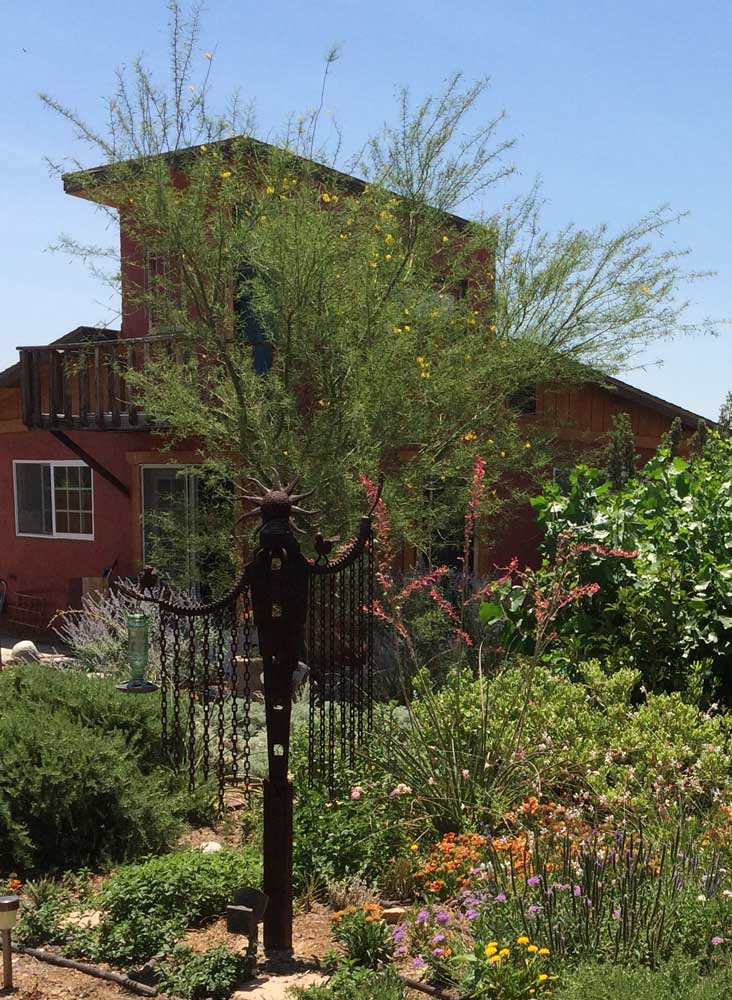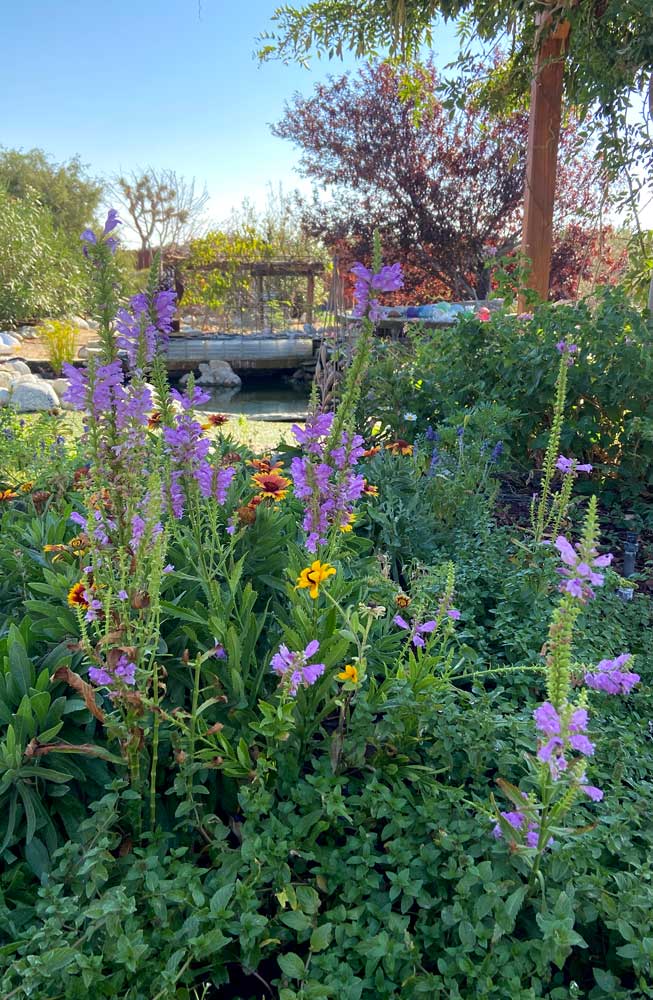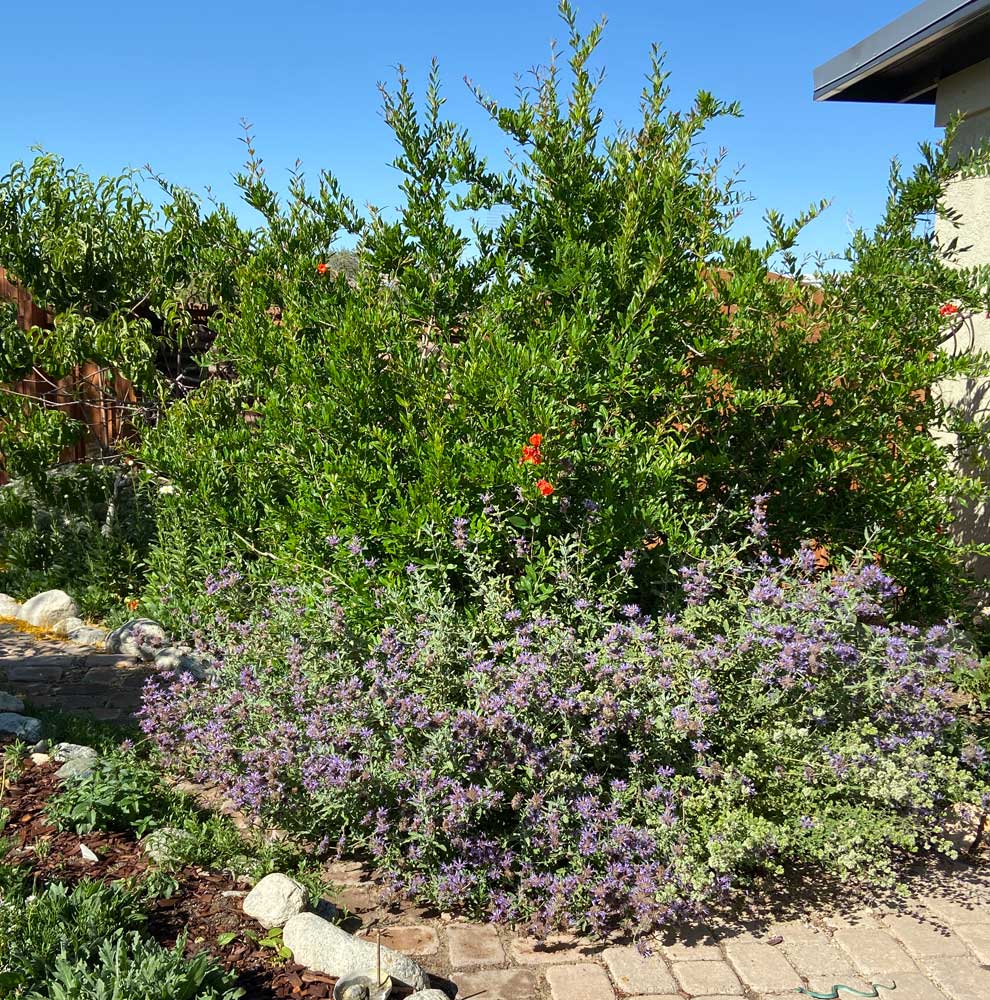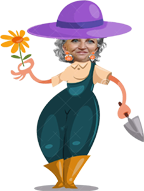More Garden Design & Plant Selection
If you are following along with my Build It steps the bones of your garden area should now be in place. You have fenced, cleared, added hardscape structures, paths and beds and installed the underground portion of your irrigation system. It’s time to go back to design and finally begin the step of plant selection.
Design Principles
1. Line
Line is a design principle that was discussed in the context of hardscape and should be implemented by means of paths and structures in your garden. Line is also an important concept in the context of plant selection and placement- both vertical and horizontal.
Study the lines that you have created and determine how they can be enhanced. Are you lacking in vertical height or have an unsightly element that needs to be blocked? Consider adding trees. Are some pathways somewhat lost to view and need to be more clearly defined? Consider adding an edging of low growing plants. Is a background area a little to prominent? Consider adding a hedge or wall of plants. Do some of your structures need a bit of pop? or a bit of softening? Consider vines.
Within beds themselves you want a variety of heights. Study taller plants that create a good backdrop for their shorter partners and will thrive in the high desert.

2. Form
Again, form is a principle in hardscape design that is equally applicable in softscape planning. Consider form to be the backbone of your garden that helps you to achieve a feeling of cohesiveness through repetition.
Including plants in your garden that have strong form is essential. Without strong form your garden will look confusing and messy. The form and shape of plants as well as other structures divide space and give it structure. This principle should be applied to every garden bed just as it was to the garden area as a whole.
Form is not only provided by the shape of an individual plant it is also created by groupings of the same plant. Repeated forms add continuity and cohesion to an area. Plants with strong form also create a backdrop to more delicate and ephemeral plants.
We all know the decoraters’ Rule of Three – objects look better in a group of three. This applies equally in garden design. When adding a group of the same plant do so in threes for impact. A group of three Pincushion flowers makes much more of a statement than one by itself.

3. Scale/Proportion & Order/Balance
Not only should any structures that you have added be in scale to those already existing, your plantings should be in proportion to the garden area as a whole as well as to each other when placed together in a bed.
Proportion is important from a design standpoint and in addition the fact is that many plants that thrive in the high desert are beautiful at the top but not so much at the bottom. A very tall plant behind a very short will lack a natural transition. Balance in heights and transition is more natural and pleasing. As is balancing bold or bright features with a complementary weight of fine textured or muted features. The aim is to create a natural flow and balance in each area of the garden.
Order can also be obtained through symmetry or through repetition of plants or colors. What you don’t want is a garden that looks haphazard, as though plants were plopped in wherever there was an available spot of soil.
When planning plantings for a particular bed it is important to consider the vantage point from where it will be viewed. Taller plants are generally placed in the back with shorter being staggered lower in front of them. Mix it up a little – you don’t want your bed to look like lines of soldiers. Add in some varying textures and shapes to break it up. You must also consider the mature size of each plant for spacing and bloom time. Try to stagger bloom times so that there is always color in an area.

3. Color, Texture and Contrast
Color is why we are here in the first place. As high desert gardeners the goal has to been to bring vibrant color into our environment. But there is a caveat to be aware of – too much jumbled color can appear messy and disorganized, chaotic even.
In my opinion achieving a colorful and harmonius garden starts with chosing your color palette. Do you want reds and pinks? Blues and whites? Or high contrast blends of purples and oranges?
The simplicity of single-color schemes can be soothing as are cool colors – blue, pink, lavendar. Warm colors – red, yellow, orange are energizing. In high contrast gardens some colors compete for attention while others harmonize. When in doubt get out your color wheel, choose a color you want and look directly across the wheel for what is called the “complementary opposite”. This color will give the most pleasing and effective contrast.
The key to making it all work on a larger scale is to repeat these color combinations in various beds. This will create a garden that is balanced and dramatic.
Texture adds the artistic touch to your planting area. It adds a tactile dimension and compliments flowers. Add spikey leaved red yuccas for height and energy. Add feathery artemisia for softening. Not only will textural plants break up a boring bed with their unique foliage they can add different shades of green for interest.

4. Flow, Transition & Rhythm
The last thing that you want in your garden is for it to appear static. To keep things interesting you need to keep the eye moving. The first steps to accomplish this are done in the hardscape phase with the layout of pathways and beds. Further refining is done with the use of line and repeating form and color.
Another way to create transition and flow is with gradual changes in height and color. Don’t make all of your beds clones of each other. Consider instead a small tree or a tall piece of garden art to lead the eye up and around your garden area.

To help in your plant selection take a look at my post:
Plant Selection Tips for the High Desert Garden
and
Five Star plants for the high desert in my Plant Index
For specific plants use the Search box for this site

0 Comments